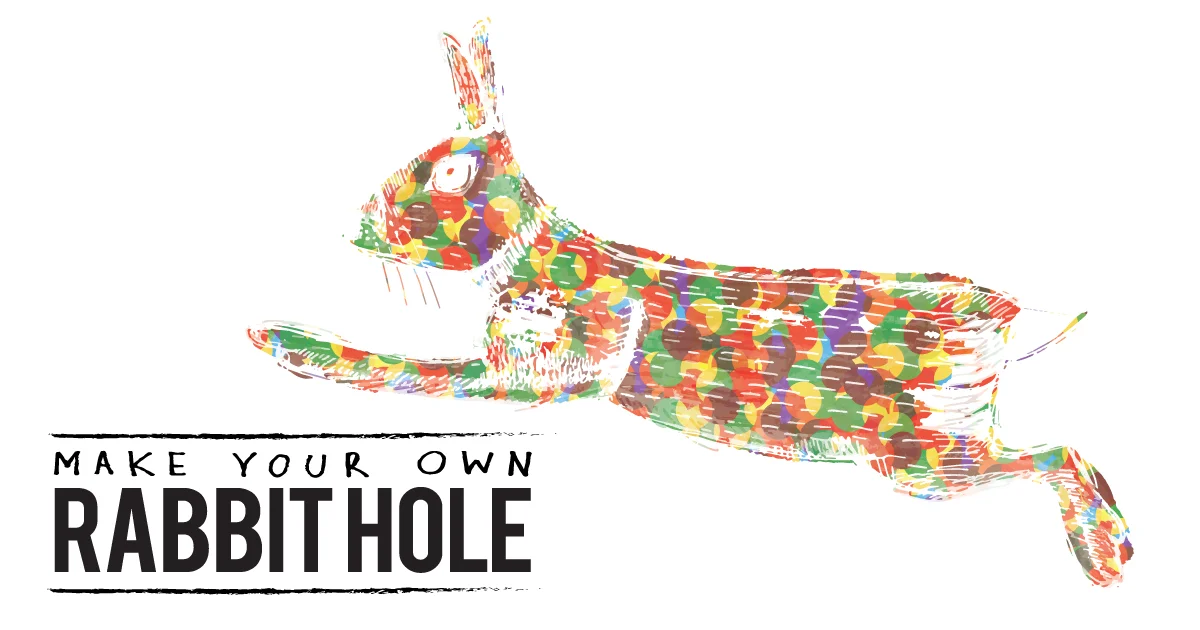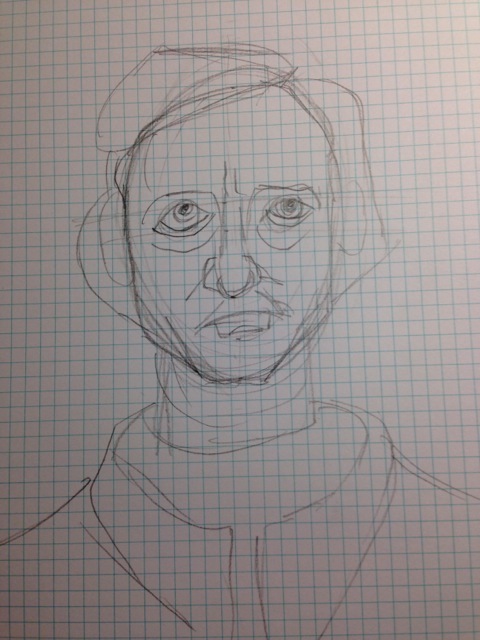Getting along with your internal critic
/Internal critic be damned. What about an 'internal tutor' instead?
I’ve always dreamed of being able to draw, so I’ve been reading this book—Draw Faces in 15 minutes by Jake Spicer—and I discovered a few things that have helped with my drawing, and maybe my writing too.
The first thing Spicer suggests is to learn to draw without criticism because your internal critic will often get in the way of what you're doing before you get a proper chance to do it, and "this can be more restricting than a lack of ability." Instead, he writes:
"Develop an internal tutor, allowing you to stand back and look objectively at your drawing, picking out its best qualities and what can be improved upon." (18)
My internal critic is always interrupting—whether I'm drawing, writing or making dinner. I never believed that nagging voice could, well, nag less, let alone help or be more encouraging. It's a revolutionary idea.
On top of the internal tutor thing, Spicer has a three-step method. It's basically three distinct phases of drawing where you (1) establish, (2) construct and (3) elaborate and refine.
Following this process has made my drawing a little better, but I noticed something else change too—my internal critic is being less of a jerk!
Spicer's basic method
The three steps go something like this. (Don't judge the method by my drawings; Spicer's are much nicer. Plus, the book is for pencil drawing, while I'm trying to learn to use pen and ink.)
Step 1: Establishing
In phase one, you look at what you want to draw, and get down a few first impressions.
Then you rub out most of the drawing, leaving only a few faint lines.
Step 2: Constructing
Over the top of your first drawing, you plot out the facial features again, this time paying closer attention to the distances between each feature.
Again, once you're finished, you erase what you have back to a few light marks.
Step 3: Elaborating and Refining
Now the proportions of the drawing are more established, you can work on each facial feature in turn, starting from the eyebrows down to the chin, then the shape of the face and ears, and finally the hair, adding shading for depth as you go.
That’s the gist of it anyway.
What I found difficult at first was erasing my drawings between each step, especially if I'd drawn something I was happy with. But you don’t really lose anything because you can still faintly see what you've done.
But, actually, the major benefit of losing some of your drawing is that the good bits no longer monopolise your attention. Weird, no?
Sometimes, I find, when one part of the drawing is going well, I'm tempted to distort the rest of the piece to fit around it. The benefit of erasing your work in between steps is it helps you focus on the drawing as a whole rather than just one aspect of it.
This why Spicer’s method is so interesting. It allows you to get down your impressions without having to commit to them forever, which gives you plenty of opportunities to rework and refine them as you go.
Best of all, knowing you have three chances to improve what you're doing makes your internal critic less anxious.
What about writing?
So, I've been wondering, could I do something like this with my writing? Currently, my 'process' goes something like this ...
My first draft is painful and the internal chatter is pretty harsh. But usually I find one or two bits I like, so I concentrate on those for awhile. After this, I want to move on, but I get stuck on the parts I don’t like. I berate myself a little more, and start again by deleting the bits I'm not happy with, but after trying to resurrect things from what I have left, I soon realise the whole piece has become fragmented and nonsensical.
From a distance this sort of looks like Spicer’s method, but it isn't. What’s missing is the progressive steps, the erasing part, and the reconstructing and refining the whole thing with every new attempt. Strangely enough, I think me holding onto the good bits of writing has been holding me back . By concentrating on them too much, I'm been distorting everything else and losing sight of the larger picture.
So, I tried coming up with a three-step writing process that's closer to Spicer's method. (In fact, I tried it out writing this post.)
Establishing — I thought about the topic and put down a few first impressions. Then I saved a new version of the document (just in case I wrote something I might regret losing), and reduced what I had to a few key words and phrases for each idea.
Afterwards, I read through the list and went over the basic story in my head, reordering and reassessing things if saw something that logically didn't fit.
Constructing — I took this list and tried turning each into a complete sentence or two. Once I got to the end, I looked over what I had written, and revised it down to the shortest sentences I could manage without them losing their meaning.
Elaborating and refining — Then, starting from the first sentence, I worked on each part, explaining and adding more detail as I went.
Since I've been trying this method out, I'm finding my ghoulish internal critic is starting to work with me rather than battering me with exhortations of hopelessness and inadequacy. He's been giving me more of a chance to test things out, and to rework things if I need to without comment.
Rabbit















Painter Tracey Read talks about spending four weeks painting and drawing her way around Italy.